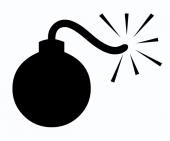Dredd 3D
Director: Pete Travis
Ok, so this review will be partially concerned with the fact
the film was in 3D – my first experience of the third dimension. It takes me an
awful long time to accept new leaps in technology. DVD? But rewinding the tape
is part of the enjoyment! I’m yet to experience an iPhone, iPad, Plasma TV, HD,
Blu-ray… the list goes on. It’s not really scepticism though. These things are
never the great leap they promise to be, just part of a greater progression
that I am more than happy to wait to be part of, once the price comes down.
Paying an extra few quid on top of an already expensive
cinema ticket for some plastic glasses and the promise of a headache never held
much appeal for me, especially as it is unlikely 3D will ever become the norm
(watch me eat my words in twenty years). But, you have to embrace it sometime I
guess.
Dredd is the
latest comic book hero to make a leap to the big screen. What a shitty sentence
that was. Judge Dredd is no Superman or Batman (though they share a love of
talking in a deep growl) and, bar a 1995 Sly Stallone film, his journey into the
wider, mass public consciousness is much nearer the beginning. But, after
seeing this film, I am incredibly pleased that journey is off to a healthy
start.
Forget all the genre tropes setup by either the first wave
of comic book films (Reeve Superman or
Burton Batman) or the second darker, deeper
varieties. Written by Alex Garland, this takes a different approach entirely,
which I found refreshing in the extreme.
For one, Judge Dredd (Karl Urban) as a character is just a
cop. ‘Just’ not being the best word perhaps, but bar a fancy gun and an
unusually ‘80s looking motorbike, he is just a man. We never see more than the
lower half of his face, his helmet remaining firmly in place for the complete
duration (in keeping with the comics, which were ignored for the loose 1995
filmed version). It reminded me of V for
Vendetta in this sense, though Dredd is far less prosaic in his utterances
than ‘V’. What it does mean is we see his scowling, grimacing mouth a lot.
Sometimes it is an angry grimace. Sometimes it’s a pained grimace. On one
occasion I saw an almost-amused-at-someone-else’s-agonising-pain grimace. But
it could have been my imagination.
That’s not to say the characterisation isn’t strong, but this
daring lack of visual identification with the lead character is followed up in
the structure of the film. There is no origin story. No shots of him sat at
home having a beer. There is very little backstory to any of it, bar an
introductory voiceover. I thought that was fantastic. We are thrown straight
into the world and what little introduction we need is handed to us through the
rookie Dredd is forced to take with him.
The entire story lacks an epic save-the-world story line
which is massively to its favour. The majority of the story takes place across
just 24 hours (roughly) and within one location. The tightness of this
narrative structure is incredibly engaging and avoids the growing tendency of
some studios to try setup franchises from film one. It’s a standalone. Yet,
ironically, because it managed this so well, another film would be a piece of
cake to make. It’s more a James Bond, mission by mission approach to potential
franchise, than the setting up of complex emotional character arcs, though
given the rich history or Judge Dredd in its 2000AD form, the potential is
there.
Given the restricted setting of the film, the visuals are
impressive. I struggled with the 3D for a while. As this is the only thing I’ve
seen it’s hard to comment but quite often it made characters look like they
were shot on green-screen even when they weren’t. You have to learn to focus in
the place it wants you to look at. In time I got used to it and I thought it
was a great effect for this type of film; a graphic novel adaptation. One of
the plots elements is a drug called ‘Slo-mo’ which causes the user to
experience reality at 100th the speed. This leads to some
spectacular, genuinely beautiful slow-motion sequences that recreated the experience
you can get reading a well illustrated comic, where the action appears to move
on the page.
From the trailers before the film (Resident Evil 72…) I can see how 3D can be used as a gimmick, but
here I felt its use was justified and heightened the film. Whether the
unreality it causes would work as well in something like Pride & Prejudice is another matter entirely.
I loved the low key nature of Dredd. It plays by its own rules, follows its own path. It seems to
pay respect to its source material (18 certificate – good decision) and clearly
isn’t interested in playing in the same ball-park as The Avengers and the like. Garland
has a great knack of drawing strong characters pieces from seemingly
unrealistic situations and it works a treat here. The action is imaginative,
colourful but grounded. The world of Dredd and the future it shows us is
scarily close to the way the world is going. It’s gritty, social commentary
with a wild imagination. It’s short, sharp and to the point. I thoroughly
enjoyed it.
Dean Freeman



There’s an awesome-looking style to it that makes the action kick that much more ass, but in terms of action, I felt like they were missing something. Still, it’s a whole lot of fun. Nice review Dean.
ReplyDelete